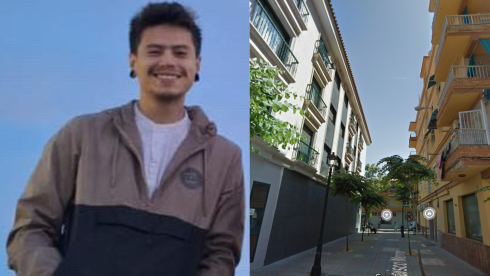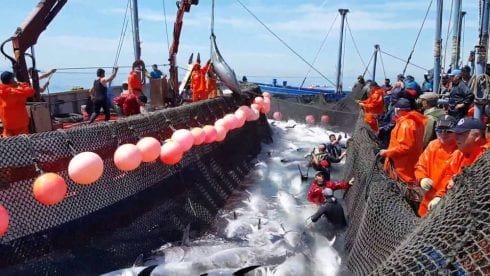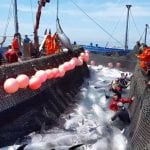OVERLOOKING rows of vines and a sea of undulating umbrella pines, the restaurant high up in the hills above Tarifa is hard to forget.
Practically impossible to find, with no signs apart from a warning that you are entering a military zone, it is an army mission in itself to find it.
Called appropriately Tesoro – or Treasure – this is one pot of gold that really is worth the effort to find.
Aside from the fabulous food – including fresh langoustines and a classic Retinto steak typical of Cadiz – the views across to Africa could not be better.
Looking across the straits with Tarifa far below us, we watched an enormous container ship slowly making its journey westwards, while in the far distance a wispy line of silvery clouds sat atop one of the mythical imposing Pillars of Hercules.
The Moors would never have had it so good on arriving in Tarifa in 710AD.
While later dubbing Andalucia ‘paradise’, it was certainly anything but peaceful when they used the town as their bridgehead into southern Spain.
This is quickly obvious wondering around Tarifa, its historic ramparts littered with statues and references to stirring catholic heroes such as Sancho el Bravo and Guzman el Bueno.
But while their heroics in finally ousting the Moors in the 13th century are celebrated today, curiously Tarifa keeps its name from its original Arabic conquerer Tarif ibn Malik.
There is certainly a very ancient feel about Tarifa.
Once through the evocative Arabic gateway Puerta de Jerez, you are quickly in a different world.
While there are few stand out buildings, aside from the odd church, the narrow streets of white-washed houses, replete with rejas and old wooden doors, feel very lived in.
It is a feeling that novelist Paulo Coelho catches well in his book The Alchemist, about a shepherd boy who stops in Tarifa on his way to Morocco.
When writer Rose Macaulay travelled here in 1949, she found Tarifa overwhelmingly Moorish, while curiously London wine merchant Tommy Layton was pestered by “grotesques, beggars and inalfabeticos (illiterates)” when he visited in 1959.
Thesedays, while it certainly still has an edge – largely due to its port, which ferries passengers to and from Morocco – it is much more a Mecca for watersport enthusiasts, in particular kite surfers and windsurfers.
There can certainly be little debate over its frequent and steady winds.
Both the Levante coming from the east and the Poniente coming from the west blow for much of the year.
It is said to be a contributing factor behind the town’s allegedly high suicide rate, and has led to the hills above the town becoming a prime spot for some of Europe’s most productive wind turbines.
Whirring away for most of the year, the Olive Press recently reported how on one day last year, 43 per cent of Spain’s total electricity demand was produced in Cadiz province alone, much of it from Tarifa.
Back in the town, take a walk up the main drag Batalla del Salado, which is full of the world’s most famous surf shops, including O’Neill, Rip Curl and Quicksilver.
In the early evening bronzed blonde-haired surf dudes hang outside their respective shops, while willowy northern European girls vie for their attention and walk their dogs.
It gets even hipper in the old town, particularly on summer evenings, with its range of trendy boutiques. There is a shoe shop that doubles as a bar, and a shop for Tarifa’s very own bespoke record label.
Then, of course, is its fabulous access to Africa, Tarifa being by far the easiest way to get to Morocco.
Just 11 kilometres to Tangier, the fast hydrofoil ferry run by German company FRS takes only 35 minutes and these days you can even go through the customs procedures en route.
In the early evening bronzed blonde-haired surf dudes hang outside their respective shops, while willowy northern European girls vie for their attention and walk their dogs.
“We have five to seven crossings a day on five high quality vessels,” says Gaitane Hermans, from FRS, a Belgian, who has lived in the town for five
years.
And before you ask, thesedays it is a lot easier to get on in Morocco, whether on a day trip or heading for a longer break.
How things have changed since award-winning American writer Truman Capote gave advice to visitors to Tangier in 1950.
He wrote: ‘Before coming here you should do three things: be inoculated for typhoid; withdraw your savings from the bank; say goodbye to your friends -heaven knows you may never see them again…”
Back in Tarifa thesedays, you are more likely to lose your friends in one of the many bars or restaurants.
“While it may be a small town there are so many good bars, with live music and food,” explains Gaspar Cuesta, a local Tarifeno and owner of the 20-year-old Hispalense language school.
“The place gets more and more fashionable by the year.
It used to be busy here just in July and August, but now the season runs from March till November.”
This is much to do with the large amount of activities to do in the area.
Aside from the windsurfing, shopping, eating and drinking, one of the town’s most popular activities is going whale and dolphin watching.
Three different types of dolphin as well as Pilot, Sperm and Orca whales are regularly to be found in the straits.
In particular Pilot whales, who feed on squid, are the most likely to be spotted, as they live here all year round.
A number of firms ply their trade around the town, including Whalewatchtarifa.net and Firmm, who offer fabulous morning or afternoon trips guaranteeing that 98 per cent encounter the mammals.
Firmm in particular is an interesting organisation undertaking numerous scientific research into the animals and the area’s fragile ecosystem.
There are also numerous good walks to be had in the area and if you are looking for more culture you might take a ride up to Bolonia, where one of Spain’s most interesting Roman ruins, that of Baelo Claudia, is well worth a visit.
And failing that, you might just want to hole up in one of the many trendy and comfortable hotels in the town, or up the coastline west, and simply relax and recharge your batteries.
Who knows the wind may even abate for long enough to get an hour or two’s sunbathing on the beach.









Tarifa has one of the highest suicide rates in the whole of Spain, if not the highest. The wind drives you nuts, basically. It never abates.
surprise comment coming from you fred
I’m full of surprises Jon. Like the wind, I never abate either ;)